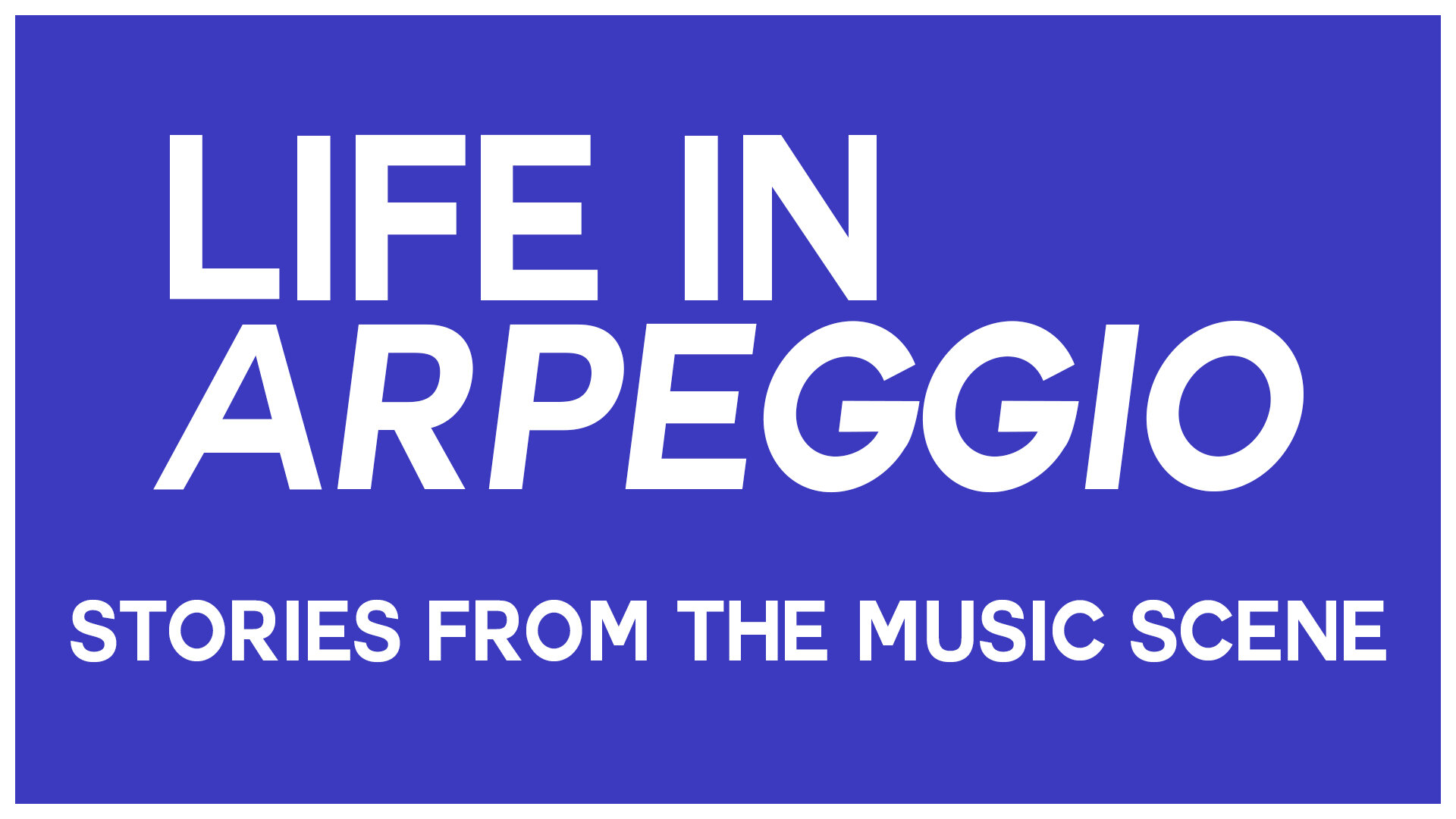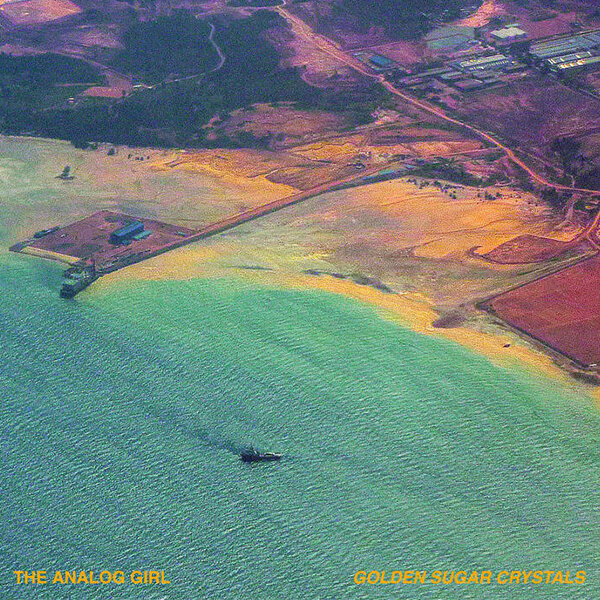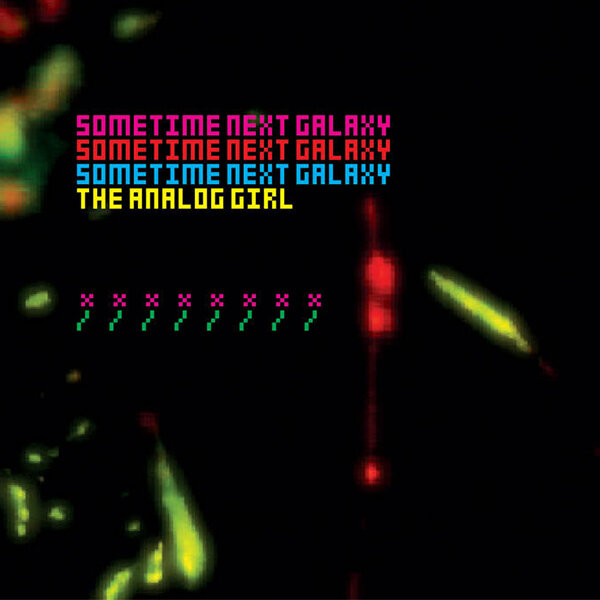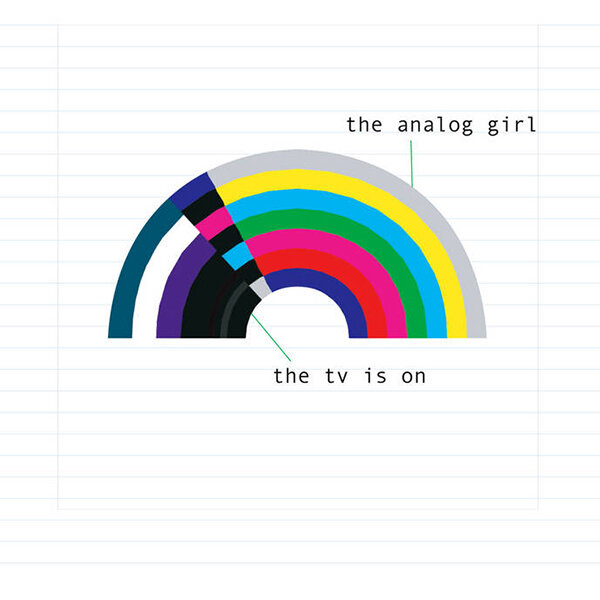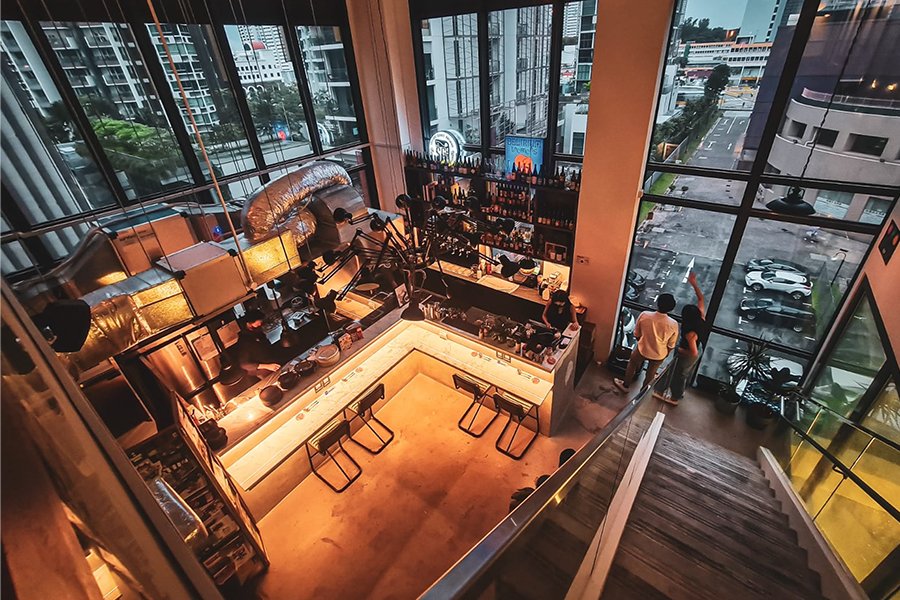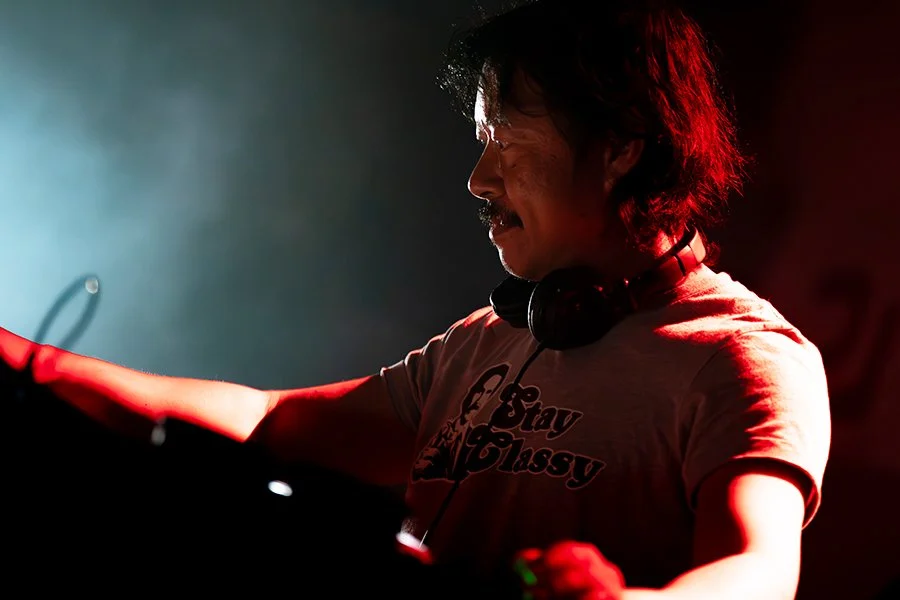In Awe Of The Analog Girl: The Electronic Icon Sheds Light On Her New Adventure
The latest adventure of The Analog Girl finds her in Awe (Credit: Courtesy of The Analog Girl)
There’s no performer quite like The Analog Girl. Watching her stack glowing Percussa AudioCubes like a game of modular Tetris, the captivating brume of gossamer vocals dancing in reverb, the evocative stream of electronica and anti-synth-pop that veers from resplendent climaxes to lurking breakdowns – these techniques and trappings make up The Analog Girl experience, an enduring fixture of the local music industry that welcomes her comeback with open arms.
When Mei Wong first emerged as The Analog Girl in the mid-noughties, she was a point of noticeability amongst critics and gig-chasers. Her breakthrough occurred at a time when rock was king; when the local scene was abundant with post-hardcore champions like A Vacant Affair and indie-rock trendsetters like The Great Spy Experiment. Electronic music had not flourished like the zenith it’s currently enjoying.
The Analog Girl live in Los Angeles with her Percussa AudioCubes (Credit: Bin)
As an artistic deviant, and as a solo female musician in the underground circuit, The Analog Girl challenged the state of the playing field with her standout presence; her synthesised concoctions sounded fresh and her interactive performances were utterly one-of-a-kind. The local community adored her, and even international media titans like Time Magazine couldn’t resist her allure. A genuine game-changer ahead of her time, The Analog Girl would end up being essential for the trajectory of the local scene, paving the way for the wealth of homegrown electronic music we see today.
Her discography over the years has been an evolving creature, manifesting in several albums baring different sets of fangs. Awe is The Analog Girl’s fifth full-length recently released, and it finds itself dwelling in areas shaped by ’70s/’80s TV theme songs and Mei’s love for disco. Without straying too far from her signature penchant for atmospheric synthwork and digital beat textures, this is The Analog Girl’s version of a dance album – less ‘Boogie Wonderland’, more dream-like neo-rave for a party of one. It’s an album that’s intimate in its illumination, reeling in listeners to get lost in its hazy, mysterious realm with the curtains closed and candles lit. In a world currently bogged down by social isolation, Awe is a collective lullaby that makes it seem a little less not okay.
Four years in the making, The Analog Girl’s latest foray has been a work of patience and devotion, and it is, as one can hope for, another triumph for a personality lauded by many. Still experimenting, still keeping the scene on its toes, this marks a new ascent of The Analog Girl, and she’s ready to unleash her fantasies one more time. In this interview feature, she shares more about the construction of the world of Awe, and how she’s grown as an artiste these past few years. It’s time to get reacquainted with The Analog Girl.
The Analog Girl wants to make you dance with her new album (Credit: Courtesy of The Analog Girl)
Congratulations on the comeback! Was there ever any crippling fear or apprehension surrounding this much-anticipated release?
Hey thanks! I think it was more of being able to muster the will to finally let go, which is always an issue for me since there never really can be a definite end to songwriting, arrangement or mixing. One moment you think you know, and in another you just want to dive back in and work on them some more. I guess that’s why we have remixes?
These tracks were recorded over four years. In their current forms, do you think they still hold the essence of their original selves or have they evolved into something new?
Most of the tracks were started in 2016-2017 and they have more or less retained their original structure and lyrics. In the past, I would simply put out whatever I had already done and not sit on them for too long as I believed in spontaneity – I still do. But somehow with every release, I find myself in a position where I am now able to pause and come back to the songs and mix from a renewed perspective. I think the arrangements and mixes have levelled up with each revisit over the course of four years.
“Being able to free my mind and devote almost all of my mental energy towards writing felt like a practice in itself and I broke ground.” (Credit: Julius Landau)
Self-isolation is one of the themes of Awe. While others might find self-isolation agonising – especially during these COVID-19 times – others relish it as a source of comfort. Where are you on this spectrum?
As a songwriter, to be able to hole myself up in a space and write for an extended period of time has always been both a dream and luxury. I was able to find those one- to two-week periods when I could be alone with just myself in my studio once or twice every year during the past four years. Being able to free my mind and devote almost all of my mental energy towards writing felt like a practice in itself and I broke ground.
You’ve also revealed that disco played a role in the formation of this album. Can you elaborate more on this?
I have been getting more and more into this genre during the past few years, but it wasn’t until my artist friend, Gina Peyran-Tan, invited me to do a cover of Gloria Gaynor’s “I Will Survive” for her video art project – that involved a presentation of fruit rotting over time – that finally pushed me to delve deeper into the disco genre. I wrote in new ways thereafter on tracks like “Over You” and “I Feel on Top of the World”. They had strings and ’70s keys!
Mesmerising audiences in Berlin with her Tenori-on (Credit: Julius Landau)
While the album is primarily filled with slower tempos, it is still very much an album that makes you wanna dance, if you ask me. Do you wish for Awe to be an antithesis of what traditional, dancey synth-pop should sound like?
Great that you pointed that out because I also came to realise that slower tracks dominated this album when I was sequencing the tracks. I think it stemmed from me wanting to write that quintessential love song, and so I ended up with a bunch of them. I made up the term ‘dance ballads’ to summarise what I do.
It is still very much an Analog Girl album, loaded with the density of layered synths and vocal harmonies. Do you have a cap for how dense a track should be? It seems like I can get lost in that cavernous sound for ages.
I’m glad you could get lost in the sound because that is one of the effects I was subconsciously trying to achieve on this album. I think song construction-wise, I have gotten more maximalist over the years. I was becoming more engaged when listening to music in general, and I was starting to absorb all that I heard. And so, I began to envision how certain parts of my songs would sound like, then go about auditioning sounds and instruments that would bring that vision to life. And I ended up with layer upon layer of harmonies and sound effects even.
Yes, that is a Nintendo DS you see there.
Can you tell us about any new hardware, software synths or plug-ins that you experimented with in crafting this album?
I have been exploring quite a bit of Korg’s Legacy Collection. I used to have a Korg T3 keyboard workstation growing up, and I remember how I used to be so thrilled going through every single synth preset. I wanted to recapture that joy and spirit in my songwriting process, so I researched and found the Legacy Collection which has the classic M1, T3, and many other cool retro synthesisers from Korg like the MS-20, Polysix and Wavestation in software form. I’ve also been using the Pro-53 from Native Instruments which is kind of like the legendary Prophet 5 – really full, out-of-this-world type of sound.
The Analog Girl spotted in Amsterdam (Credit: Julius Landau)
Your gadgets have always been a signature component of your live performances. Have you found any new ways to perform live lately? Any new thingamajigs?
I’ve been sticking with the tried-and-tested combination of the Tenori-on, Monome, and Percussa AudioCubes because I thrive on practice and repetition when it comes to perfecting the live show. My only addition from two years back is the softPop sound syntheiser by Bastl Instruments which has not become a staple and I must admit I was attracted to its looks.
“Feeling Light” was the first single off this album, released with a gorgeously trippy lyric video that you produced. What inspires your visual direction in works like these?
My current visual obsession is with A.G. Cook / PC Music, and my dream would be to generate that style of computer graphics for my videos. But for now, I dig the royalty-free archives on the Internet for CG clips. It is a change in visual identity for me because I used to go for the more retro-future look I guess. There is also a new music video that follows the lyric video, so check it out!
In between albums, have there been other milestone achievements you racked up these past few years?
I always love a good live show, so I’d say my shows supporting Ice Age and Men I Trust last year were personal highlights. I also created a soundtrack for a video game for the first time! It is for Our Tampines Hub’s National Day 2020 celebrations and it is for a game called Sonic Blast, with creative direction by Syndicate and visual treatment by Rizman Putra of Tiramisu and NADA fame. You can still check it out under Tampines New World, or download the Our Tampines Hub app on your mobile phone. I’m really proud of this one because the vibe is like a futuristic carnival.
The Analog Girl has also graced stages in Lisbon (Credit: Courtesy of The Analog Girl)
As a veteran in local electronic music, what can you say about its current state in the scene?
I kind of see myself as a crossover artist, so I have eyes and ears on new artists across genres. The scene on the whole has been expanding by leaps and bounds; there are so many artists now, and many putting out works of high production value. But we need more than that to break through, and many times, it just takes that one song, or personality. And tonnes of hard work and preparation for sure.
Windows into the repertoire of The Analog Girl. Click on each album cover to listen.
With everything you’ve accomplished since the mid-noughties, there is a certain reverence for the legacy of The Analog Girl, with a new generation of local artistes indebted to you for paving the road ahead. How do you feel about this pedestal the industry has put you on?
Aw thanks Kevin, but I think it is the Internet that really paved the road for the new generation of artists, hahaha! And their ability to pick up production skills quickly. I hope I had inspired some, but I take no credit.
Lastly, what’s next for The Analog Girl now that the album is finally out?
I am hoping to do more live-stream shows. I have been doing a few during Circuit Breaker (lockdown) for Malaysia’s Venuescape’s Blockdown Festival, Micromusic Italy’s Sunday Jam, and Our Tampines Hub’s Let’s Art performance series. My most recent was for F For Fantastic, and next up for UPLOADING NOW. More to come!
(Credit: Courtesy of The Analog Girl)
You can now listen to The Analog Girl’s latest album, Awe, on her Bandcamp page. Follow her Facebook and Instagram pages to stay updated with her activities.
